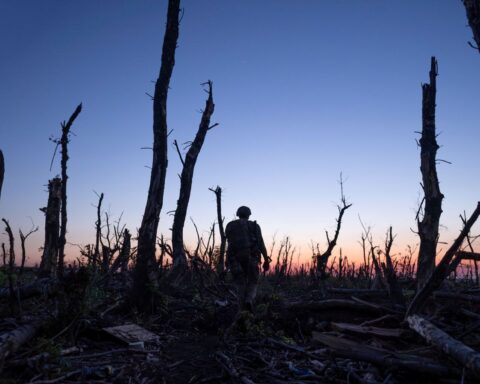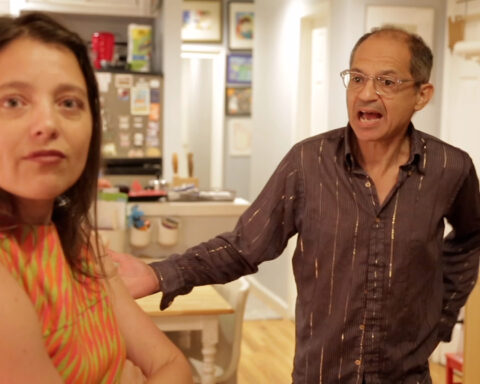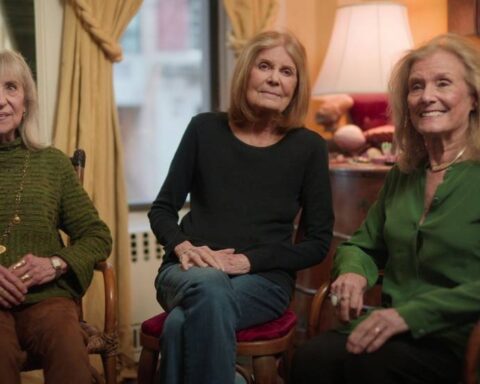A FUNNY THING HAPPENED when I reflected on my experiences at the 2013 Hot Docs festival.
As a filmmaker and a writer instead of blithely celebrating another great 10 days of viewing, pitching and chatting, I began to consider where the documentary genre is going.
If you were to ask most people what format comes to mind when you say “documentary”, chances are they will say “movie” or “TV show.” By that they likely will mean a factually grounded feature-length film or hour-long TV programme, designed to bring a viewpoint to the fore, at odds with—or possibly in opposition to—the ideas promulgated by the rest of mainstream media. Of course the genre is much wider than that, but this is my understanding of what the average person thinks.
Why even bother defining this? Because it seems to me that as much as the documentary filmmakers I’ve come across invest their time and energy and spirit in making long-form films, and as great as those films can be, the ground has shifted from under our feet. The shyness of broadcasters to commit to projects is only one indicator of a larger shift. The bigger concern has to do with the next generation of viewers who are now being trained to accept fragmented and interrupted delivery of content as normal.
Art forms and cultural knowledge systems evolve over time. Trends can last hundreds or thousands of years. In the case of docs, the trend may come and go in a generation. Just because the long-form documentary is the king of the hill now, doesn’t mean we can take it for granted. Making a great film is only relevant if audiences will watch and pay for it. If Hot Docs is any indication, we’re safe in the short term.
It was the keynote speaker at the Doc Summit, Knowledge Network’s CEO Rudy Buttignol, whose talk triggered these thoughts.
Just ahead of the Snowden NSA scandal eruption, Buttignol presciently encouraged us to pay less attention to the Orwellian 1984 predictions of a total surveillance culture and more to the thoughts of Huxley’s Brave New World. In that heady novel about a dystopian future, the majority of people on earth have their thoughts shaped in childhood by a leadership that wants their ambitions and opportunities curtailed so that they are easier to control.
I’m no conspiracy theorist, but in the age of 140-character Twitter messaging and urgent software pokes and hardware buzzes and prompts, it’s safe to say that we are truly in an age of self-inflicted distraction. And in this critical age of global climate change, overpopulation and water and oil crises, it’s a bad time to be distracted. It’s kind of like driving and texting on the highway.
A good film project being passed on by funders isn’t necessarily any indication of the dissolution of feature documentaries, but I was certainly surprised at what I heard from director Hanna Polak at the Hot Docs industry crown jewel, the Forum.
I had seen her 2012 pitch for Svalka: Yula’s Journey, which deservedly won the Cuban Hat Pitch prize, a Forum audience award. Yula, initially a girl living in a Russian garbage dump, was filmed for 11 years until she had become a young woman. The story was told in a compelling and straightforward manner and seemed to have the potential to pull on all of our heartstrings, without resorting to a contrite resolution. But Polak was not experiencing a happy ending at all.
Since the Forum, she’d spent the better part of the year attempting to satisfy a very encouraging potential funder. But the funder didn’t follow through. Polak was beside herself with upset at the amount of energy and time put into fostering the relationship in lieu of simply completing the film. It left me wondering how a project with such depth and coverage could end up getting passed on like that.
And then I zoomed out a little, still wondering why. Overcrowded market? That’s always been the case. Sure, there’s a lot more people with access to cameras and desktop editing these days, but there’s always room for an excellent film, isn’t there? Not everybody with a camera makes a filmmaker. There’s craft involved. And tradition. Polak seemed to be very credible, especially considering that her executive producer is Films Transit International’s Jan Rofekamp, the winner of the Hot Doc Mogul award in 2010. Maybe she just fell between the cracks?
As I watched the films screening this year, another possibility dawned on me. New standards in visual storytelling have been set, mostly made available by cheaper and cheaper cameras, which are increasingly sophisticated. But as the saying goes, just because you can, does it mean you should?
Sensationalism is on the rise. In Maidentrip, we not only saw a film about the youngest female—only 14!—attempting to circumnavigate the globe in a sailboat, solo, the doc was shot first-person with GoPro and Handycam cameras. Aside from being the only way the film could logically have been made, it’s likely that the pitch would have “sucked” had it been made any other way.
Or, how about this: a Danish expedition reaching into parts of Greenland, opened up by global warming and thought to be previously unvisited by humans; a scientist discovers a new aquatic species.
That astonishing story is basically told in passing, in the highly touted doc Expedition to the End of the World. Think about it. The species preexisted any contemporary scientific revelation. “Discovering” it is a misnomer, really. You could argue that locating a previously unknown species contributes to the expansion of human consciousness. But instead of dwelling on this new species, the filmmaker found it much more compelling to show a hut ravaged by polar bears. After all, it moved the narrative forward. I wonder what Werner Herzog might say about such a thing.
I heard Herzog speak a few years ago alongside Errol Morris. One thing he said that really stuck with me pertained to his disdain for television. He stated that the real travesty about TV is that for the first time in human history, storytelling had become interrupted. At the time, Herzog claimed not to own a cell phone, an ethical stance if it’s true. But this was before the increasing fragmentation in our lives and our means of storytelling, which is truly a phenomenon currently on steroids.
There’s no doubt that the feature doc is still king of the hill, and Hot Docs is the tallest mountain around here. But if you consider the viewing habits and social-media usage of the current generation, changes are about to happen that will likely alter the entirety of documentary creation and viewership. Consider this: after years of struggling to enforce a futile ban on in-class use of mobile devices, schools are now using the technology. The audience shifted the culture of their institution.
Something similar is bound to happen to documentary delivery forms and public viewing venues because you can’t ignore audience expectations. Filmmakers are under increasing pressure to stand out. Staying relevant seems to have more to do with having the latest camera or playing the social-media numbers game than anything else. On one hand, the faster you learn the new technology, the better off you will likely be in the marketplace. On the other, the more energy you put into it, the more of your time is devoted to simply being in the game. And that, no matter which way you slice it, is yet another distraction.









